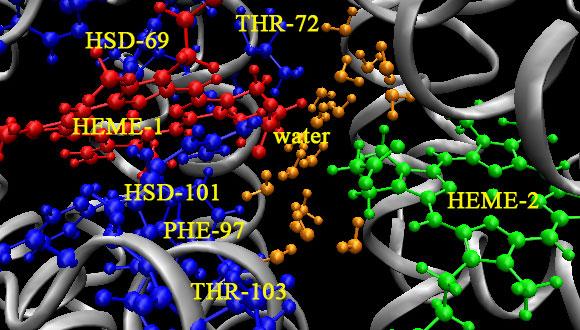סמינר בכימיה פיזיקלית
Dr. Ayala Lampel, TAU
Zoom: https://us02web.zoom.us/j/87075995730?pwd=RWNJSDMvN3RJaEpPeXRoZkFnZzExQT09
Abstract:
Biological systems employ a precise spatiotemporal control of enzymatic catalysis for construction of functional materials. This control is achieved by supramolecular templating of biocatalytic action or by compartmentalization of enzymes and reactants in confined spaces within the cell. Construction of functional synthetic materials, by contrast, is mostly focused on formation of bulk structures, with spatial and temporal elements only recently considered. A natural system which requires such regulation is the biosynthesis of melanins, a class of pigments found across all life forms and provide coloration, protection from photo- and free radical-induced cell damage, metal chelation and anti-oxidant activity1. While these pigments are made from chemically simple building blocks, their biosynthesis and assembly relies on tightly regulated processes, which are both temporally and spatially controlled2 and further fine-tuned by incorporation of locally available metabolites. In contrast, the laboratory-based synthesis of melanin is a poorly controlled process resulting in formation of an insoluble material. Unlike supramolecular systems, where order dictates function, the disorder in melanin is important for its functionality, hence, balancing between order and disorder is key for controlling pigment properties.
To address this major challenge, we designed tyrosine-containing self-assembling tripeptides as precursors for the catalytic formation of polymeric pigments3. We showed that the supramolecular order of peptide substrates is encoded by their sequence4, and demonstrated the sequence-structure relationships underlying these assemblies. The level of supramolecular order, in turn, controls substrate accessibility, leading to a sterically and kinetically controlled enzymatic oxidation and polymerization pathway, resulting in pigment materials with a range of properties, depending on the peptide sequence. Furthermore, inspired by the natural mechanism to form variety of melanin pigments, which simply relies on reactive incorporation of the amino acid cysteine into oxidized tyrosine, we contemplated that the optical properties of melanin-like pigments can be expanded and tuned. For this, we developed melanosome-like peptide microparticles as reactive template that can react with amino acids to form new types of chromophores. Thus, mimicking firstly the natural brown/black eumelanin and the yellow/red pheomelanin with cysteine added, but then taking it much further by including other amino acids in the feed, giving rise to in situ formation of new peptide chromophores5. The resulting particles have customizable properties that mimic, but go far beyond those observed in natural melanins, with coloration and tunable fluorescence emission that is encoded by the side-chain of the incorporated amino acid, ranging from blue to far-red, suggesting applications in sensing of amino acids and other metabolites.
References:
-
d'Ischia, M. et al. Melanins and melanogenesis: from pigment cells to human health and technological applications. Pigment Cell Melanoma Res. 28, 520-544, 2015.
-
Raposo, G. & Marks, M. S. Melanosomes--dark organelles enlighten endosomal membrane transport. Nat. Rev. Mol. Cell Biol. 8, 786-797, 2007.
-
Lampel, A. et al. Polymeric peptide pigments with sequence-encoded properties. Science 356, 1064-1068, 2017.
-
Lampel, A., Ulijn, R. V., Tuttle, T. Guiding principles for peptide nanotechnology through directed discovery. Chem. Soc. Rev. 47, 3737-3758, 2018.
-
Lampel, A. et al. Melanin-Inspired Chromophoric Microparticles Composed of Polymeric Peptide Pigments. Angew. Chemie 2021.


